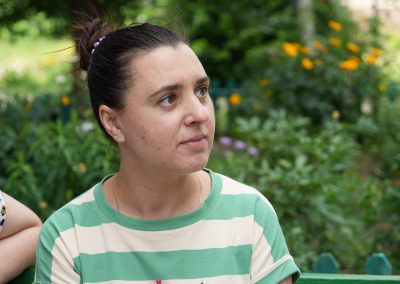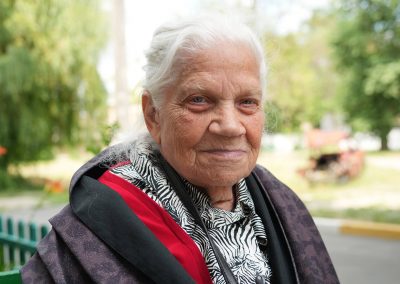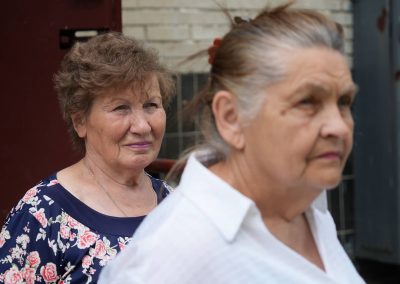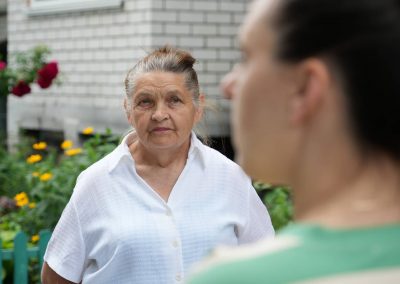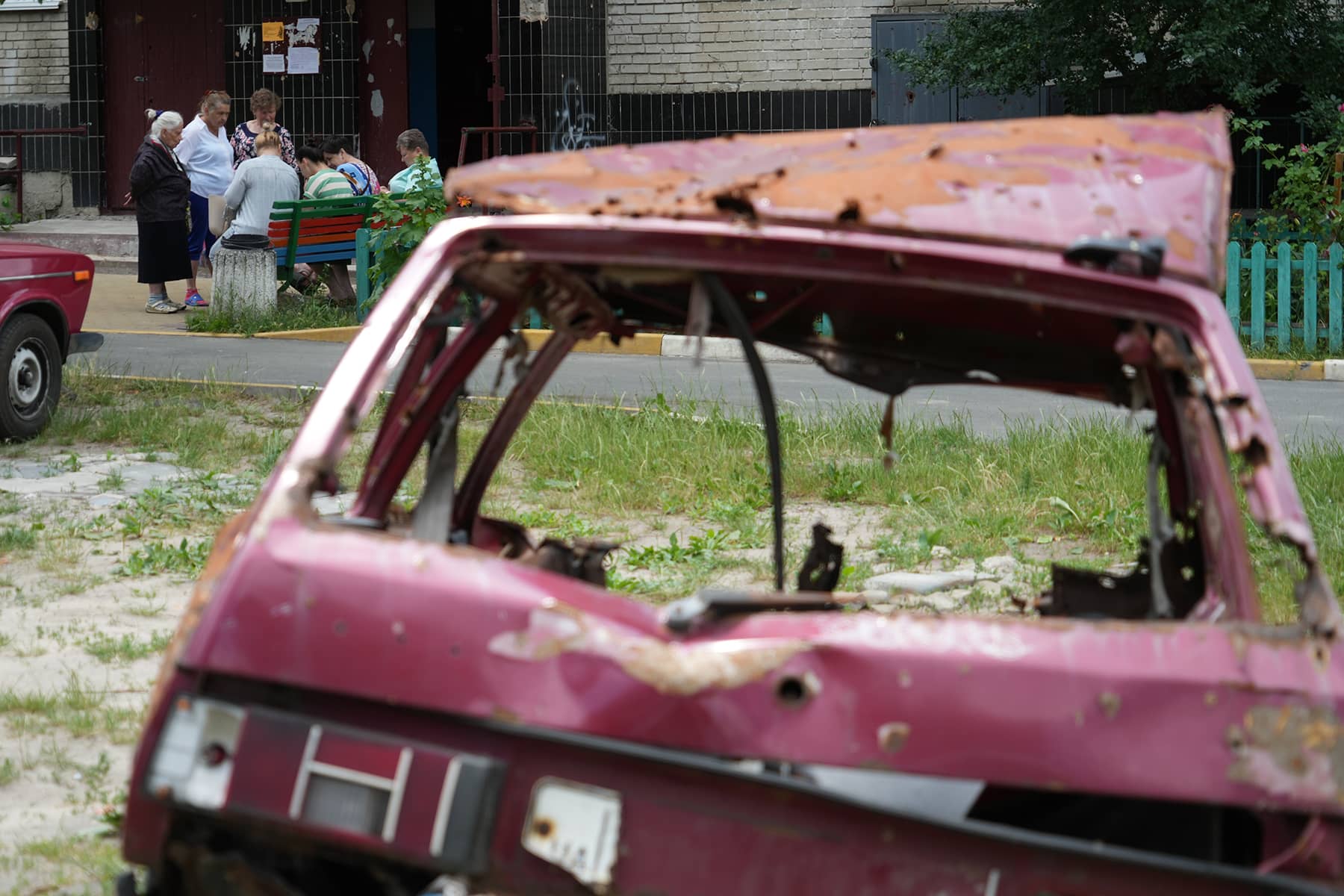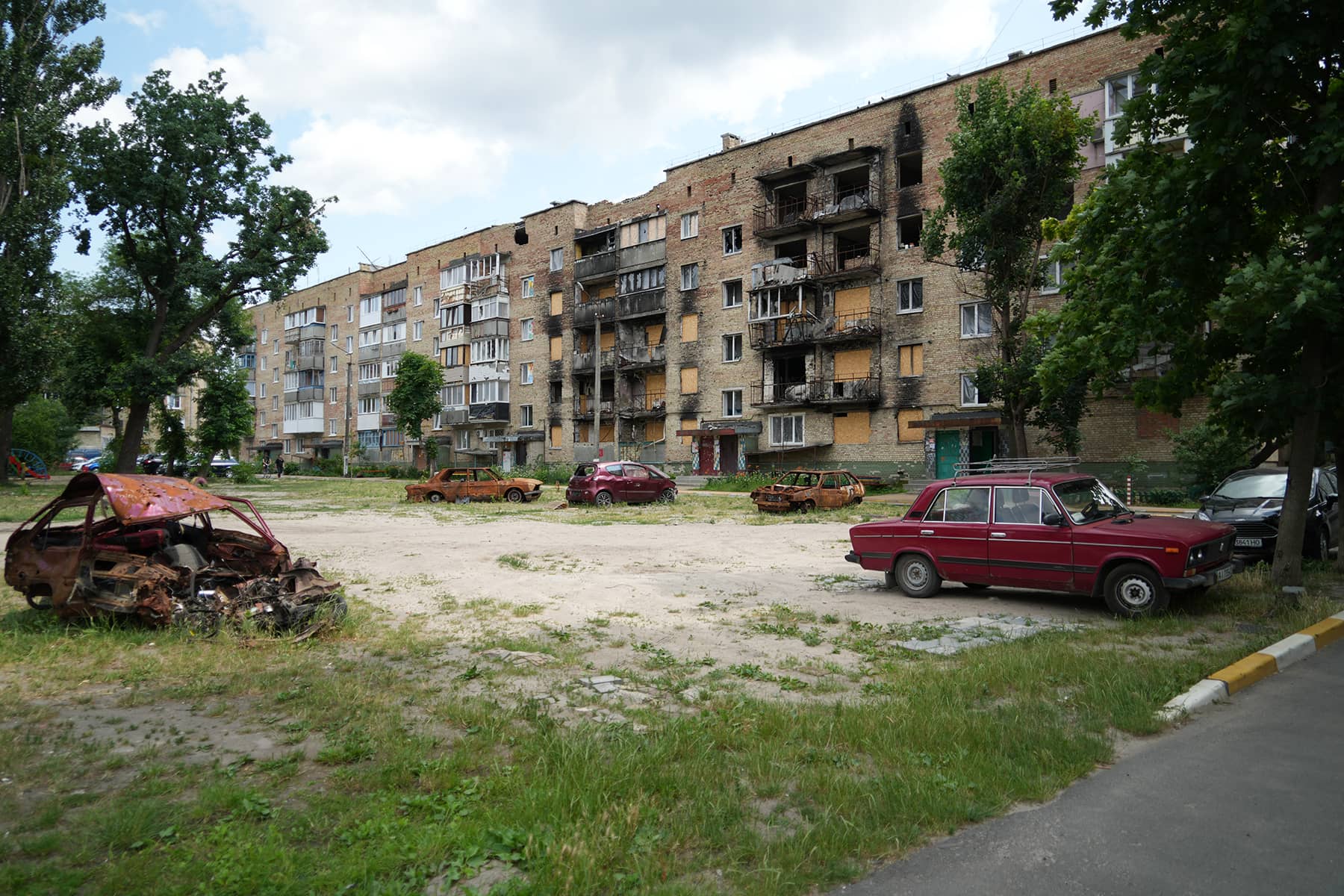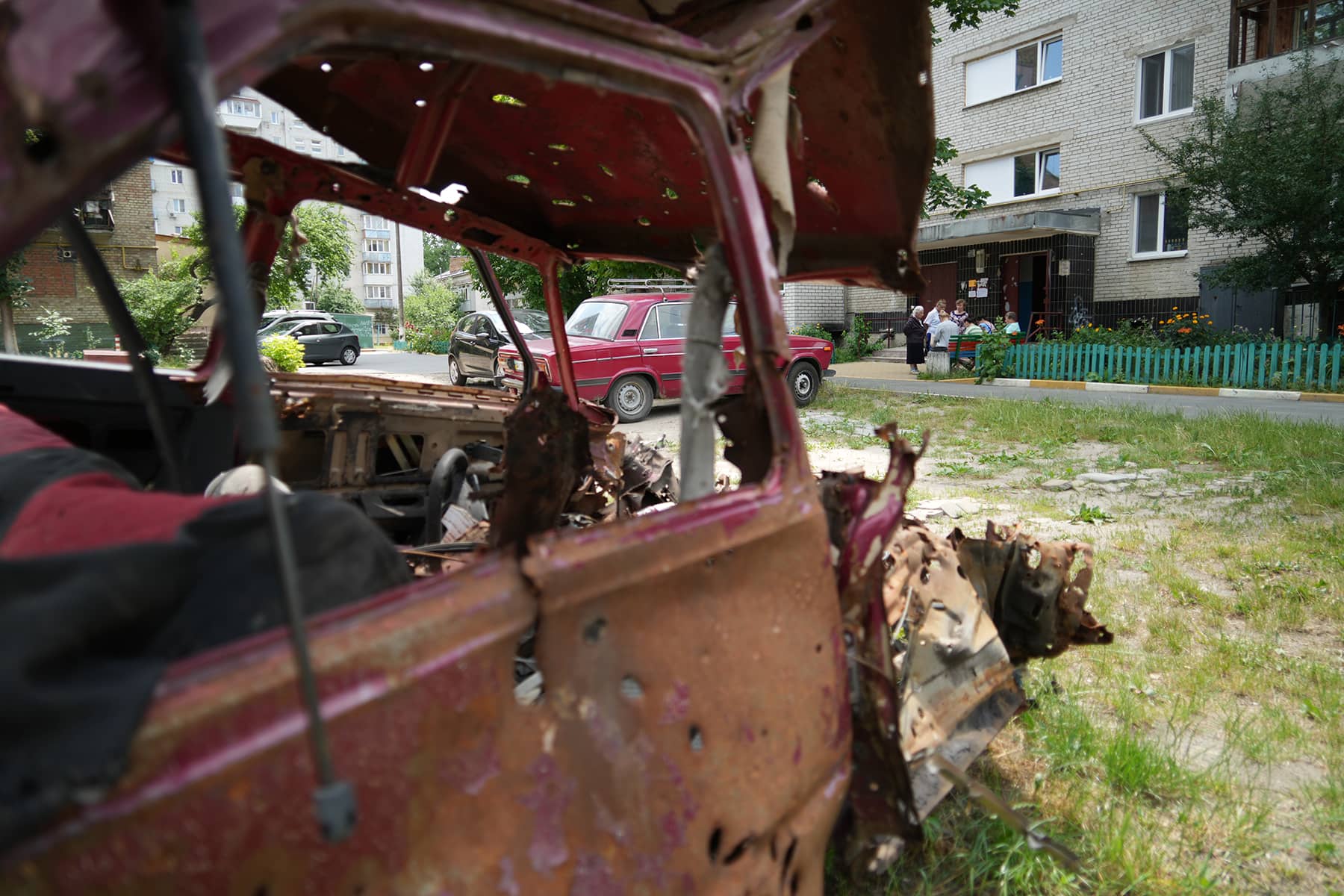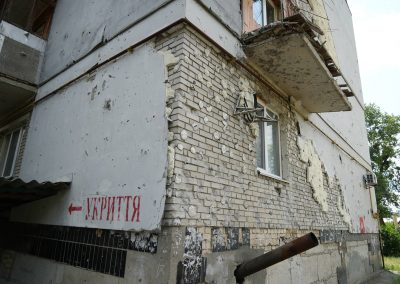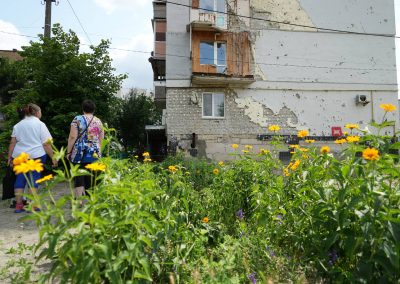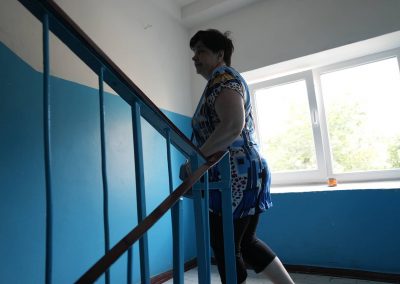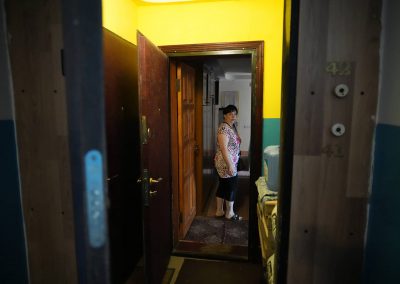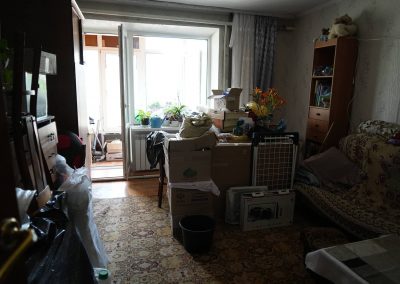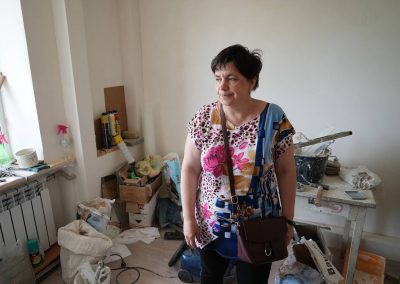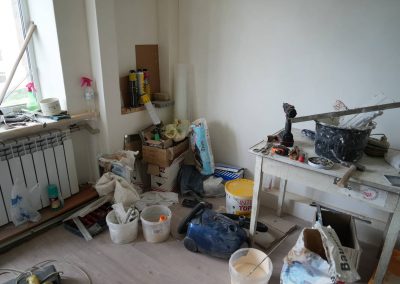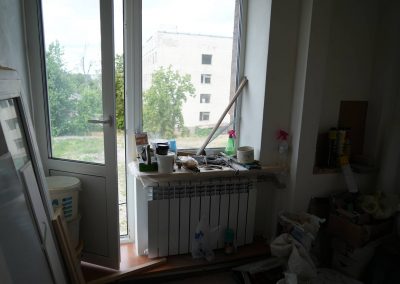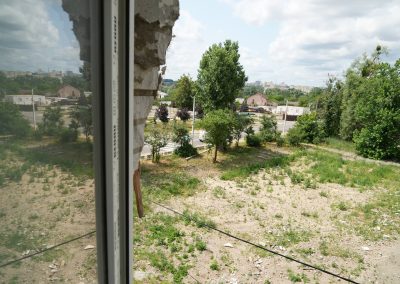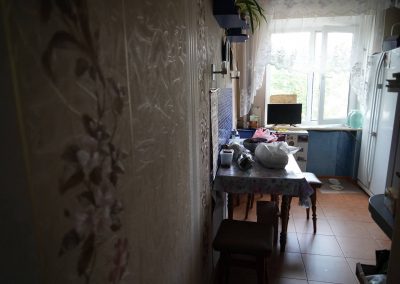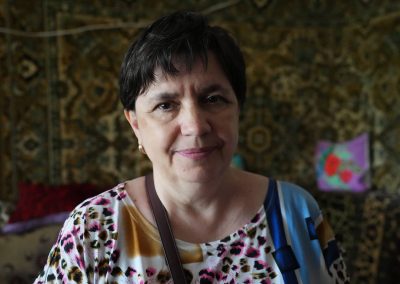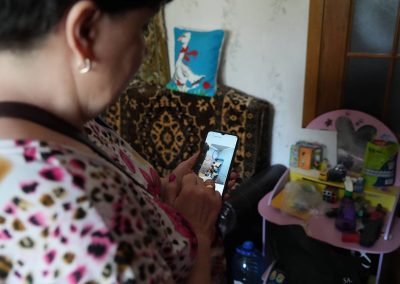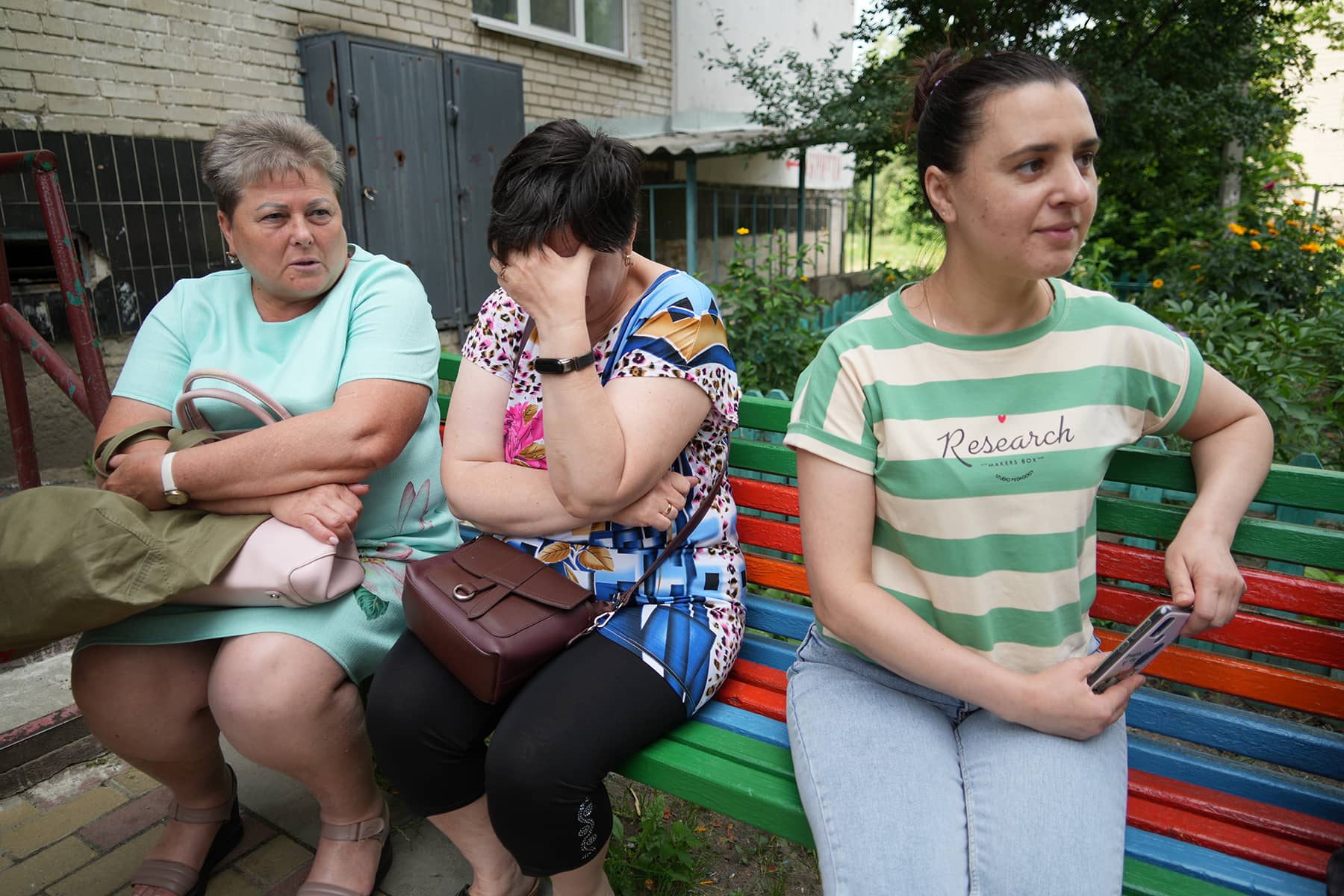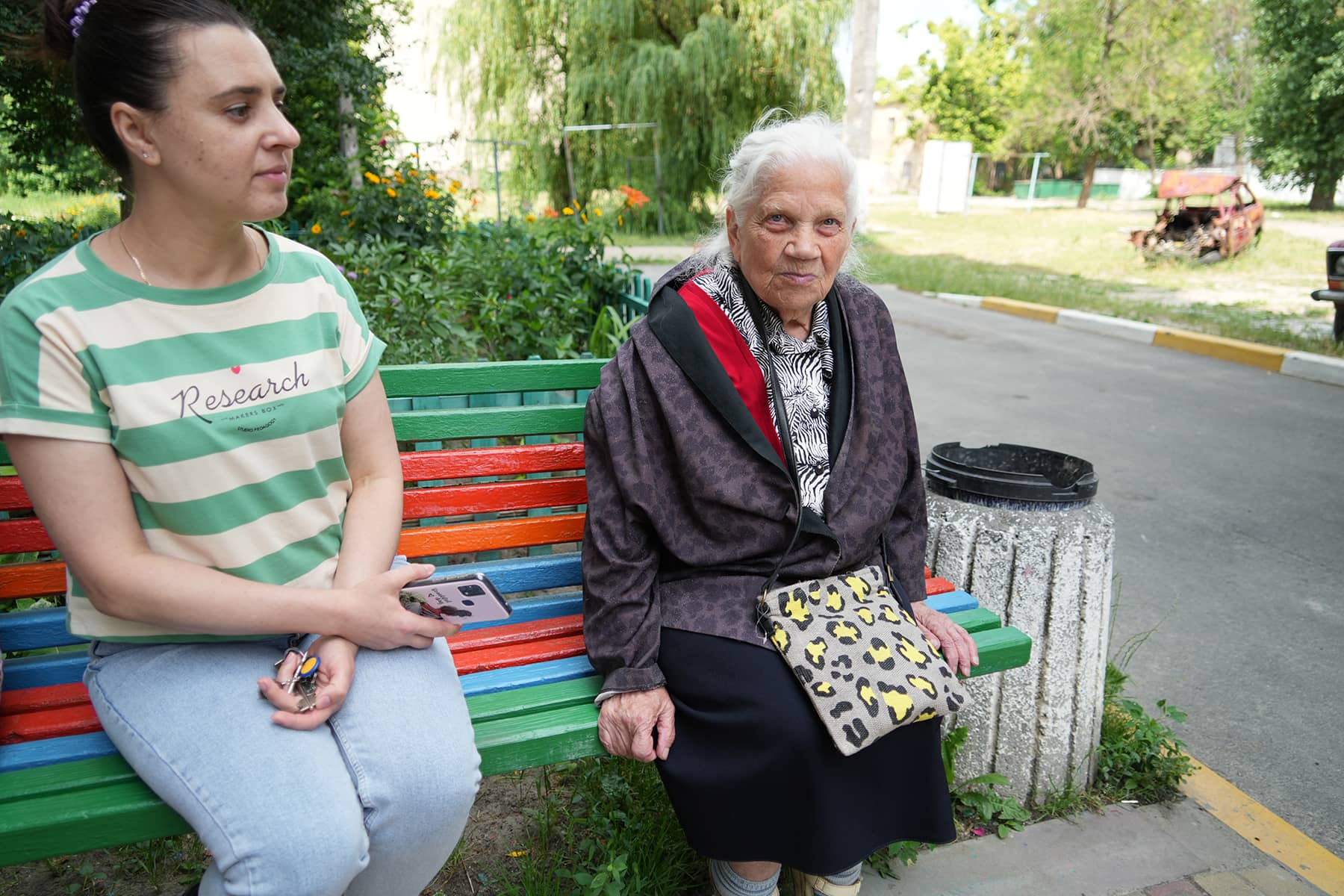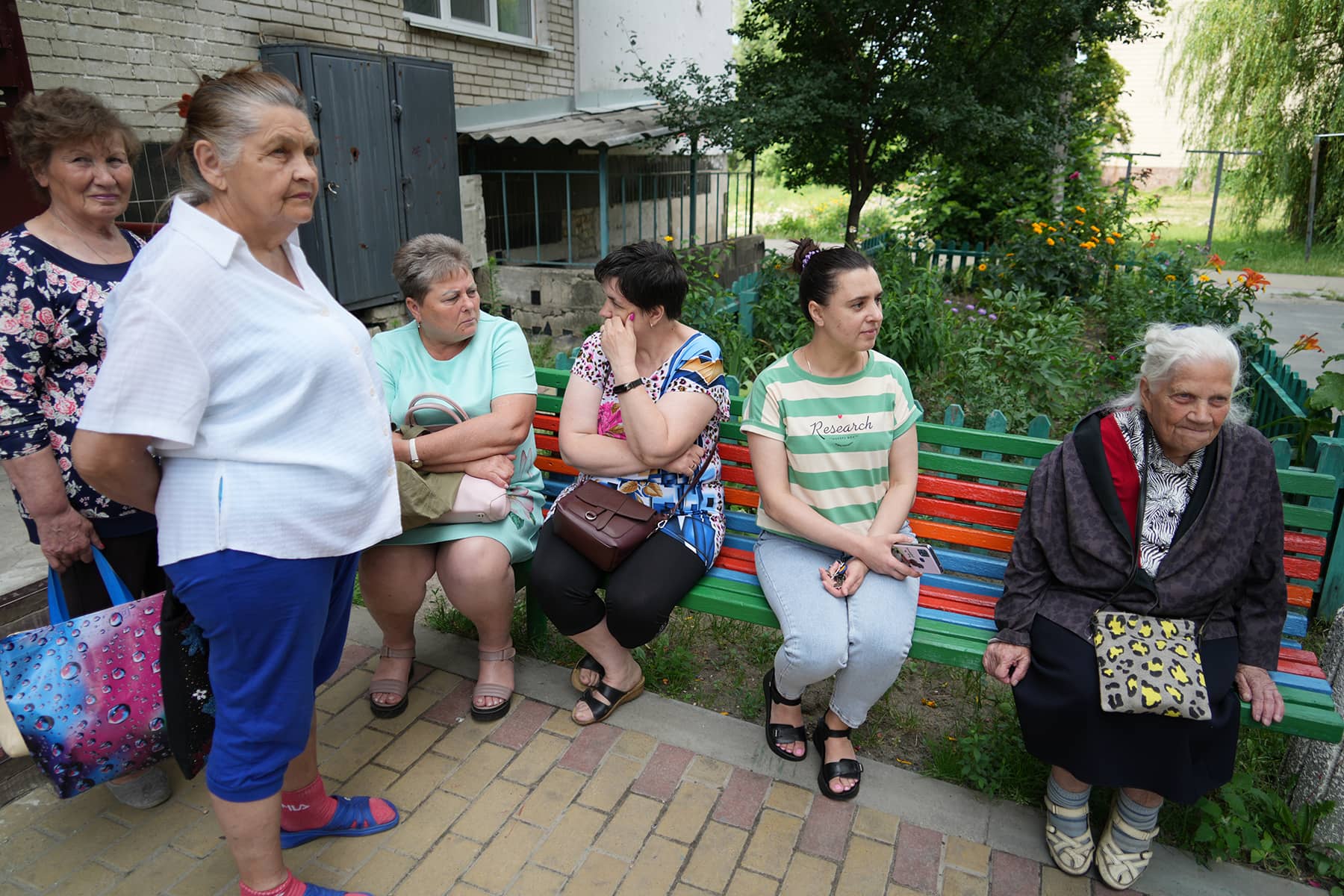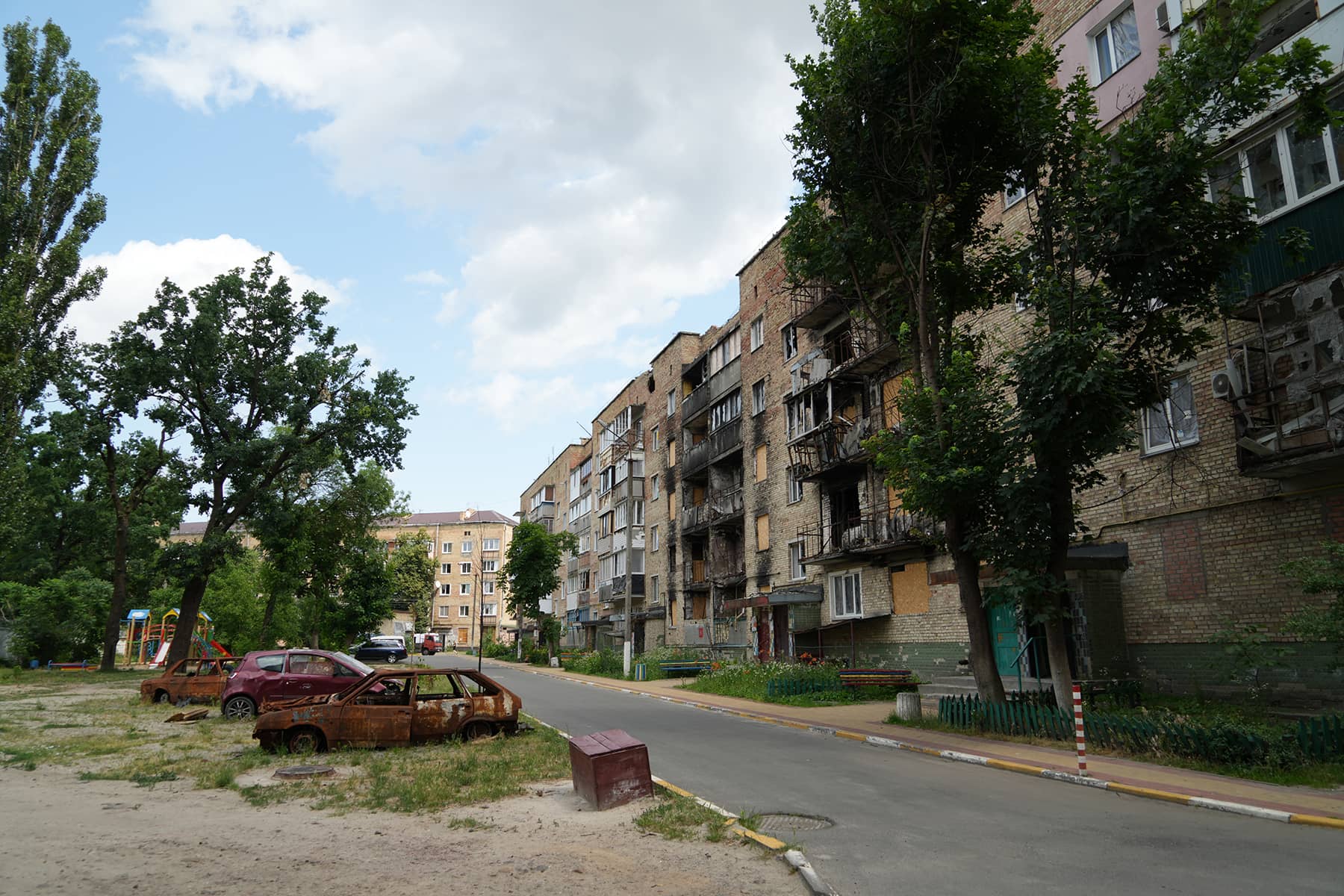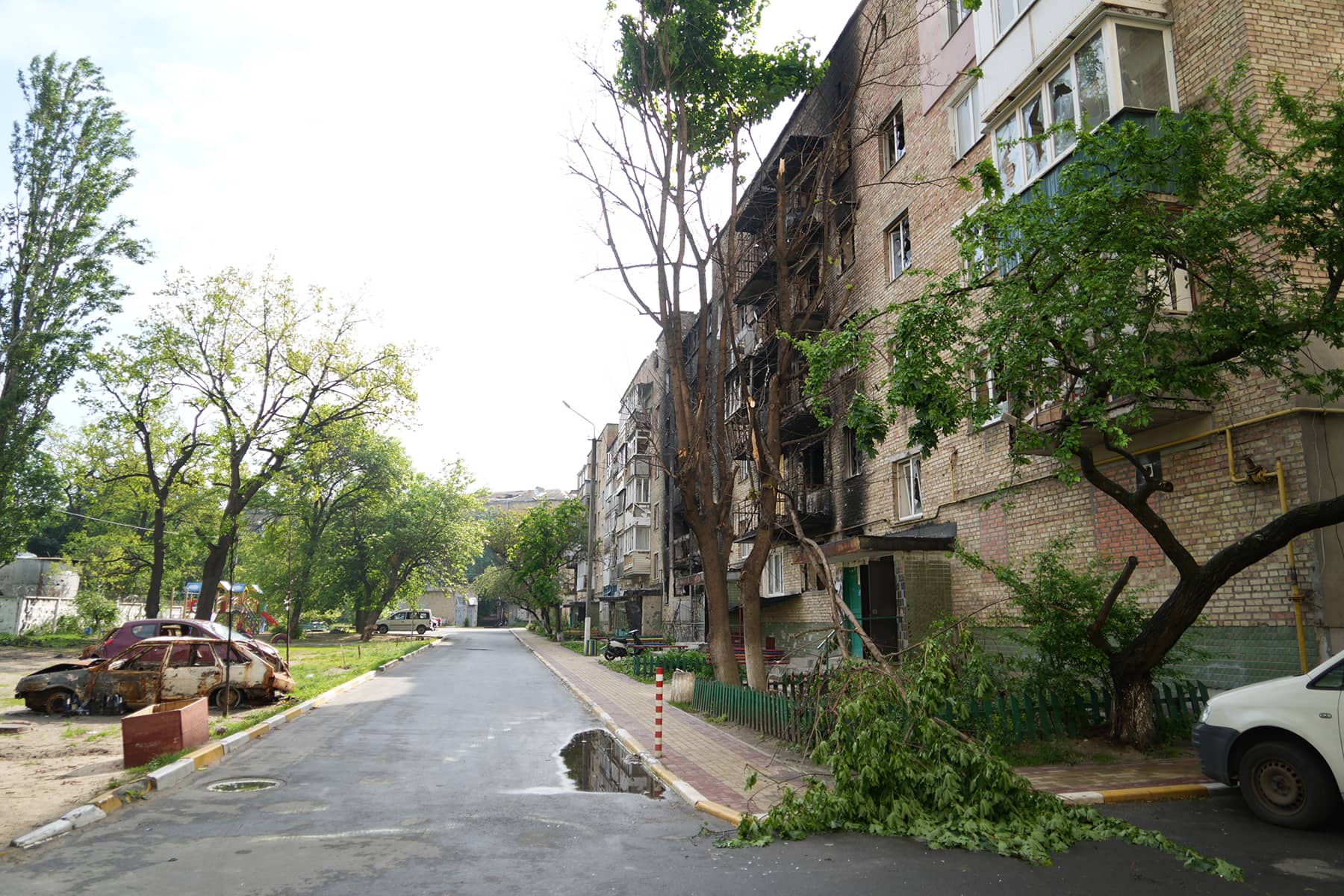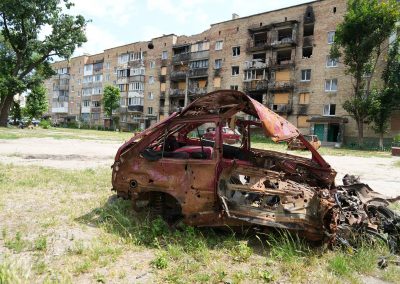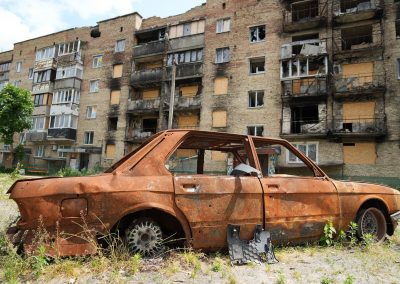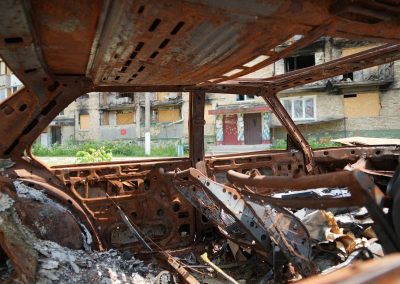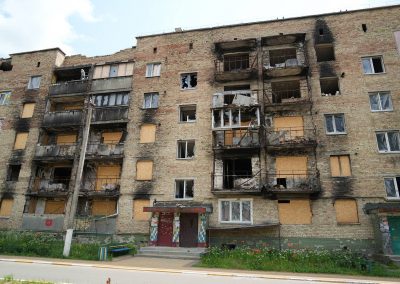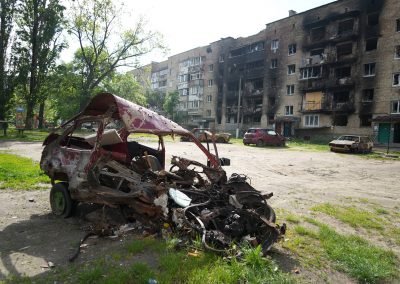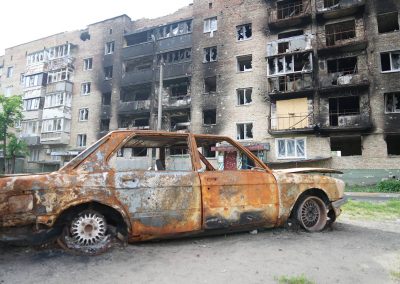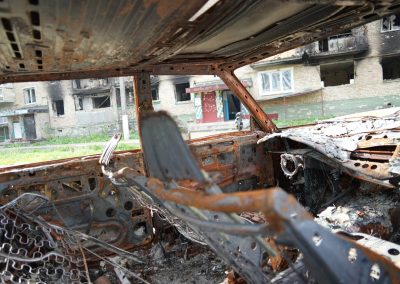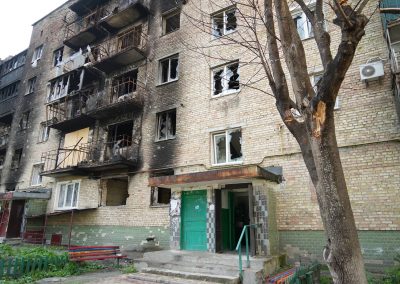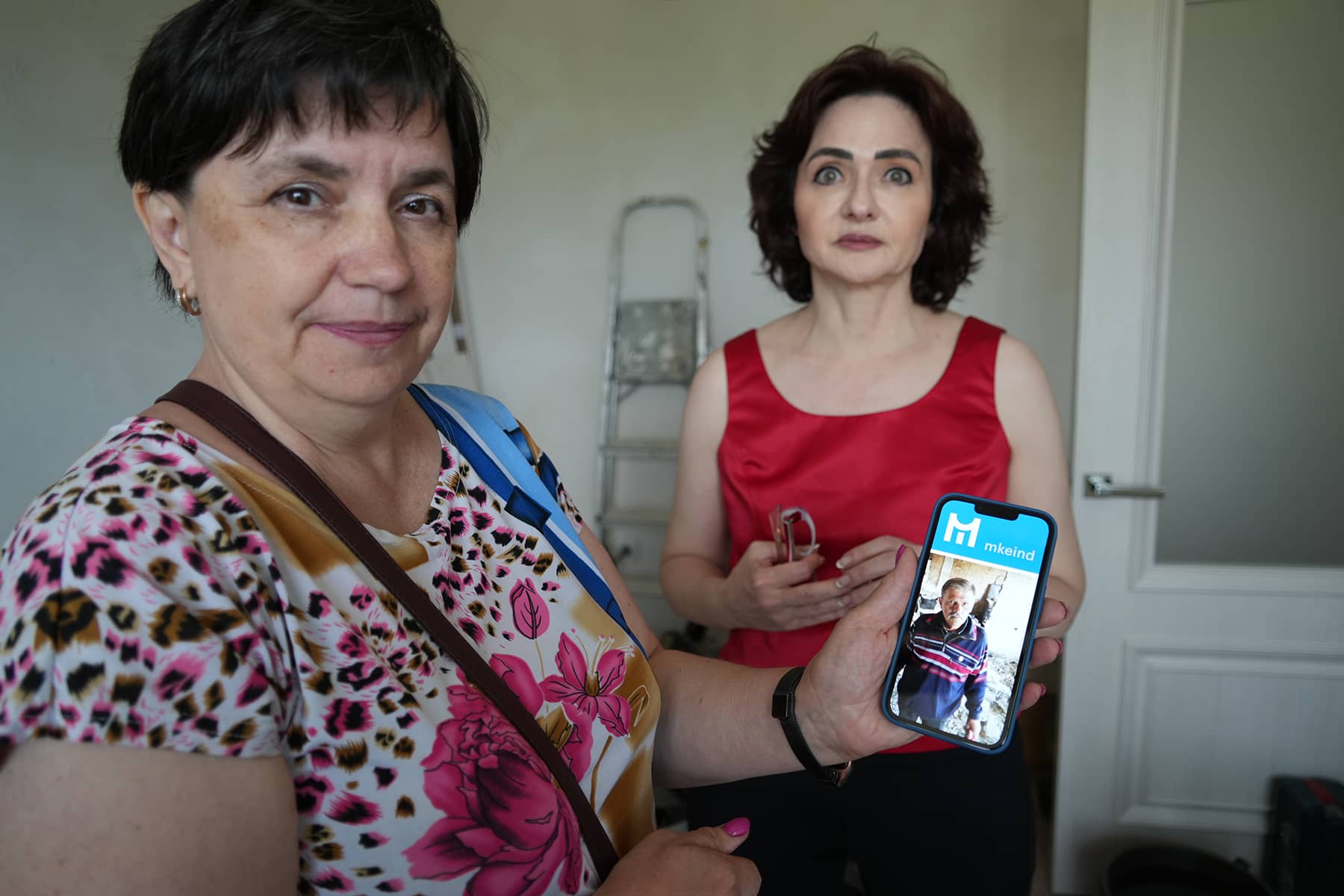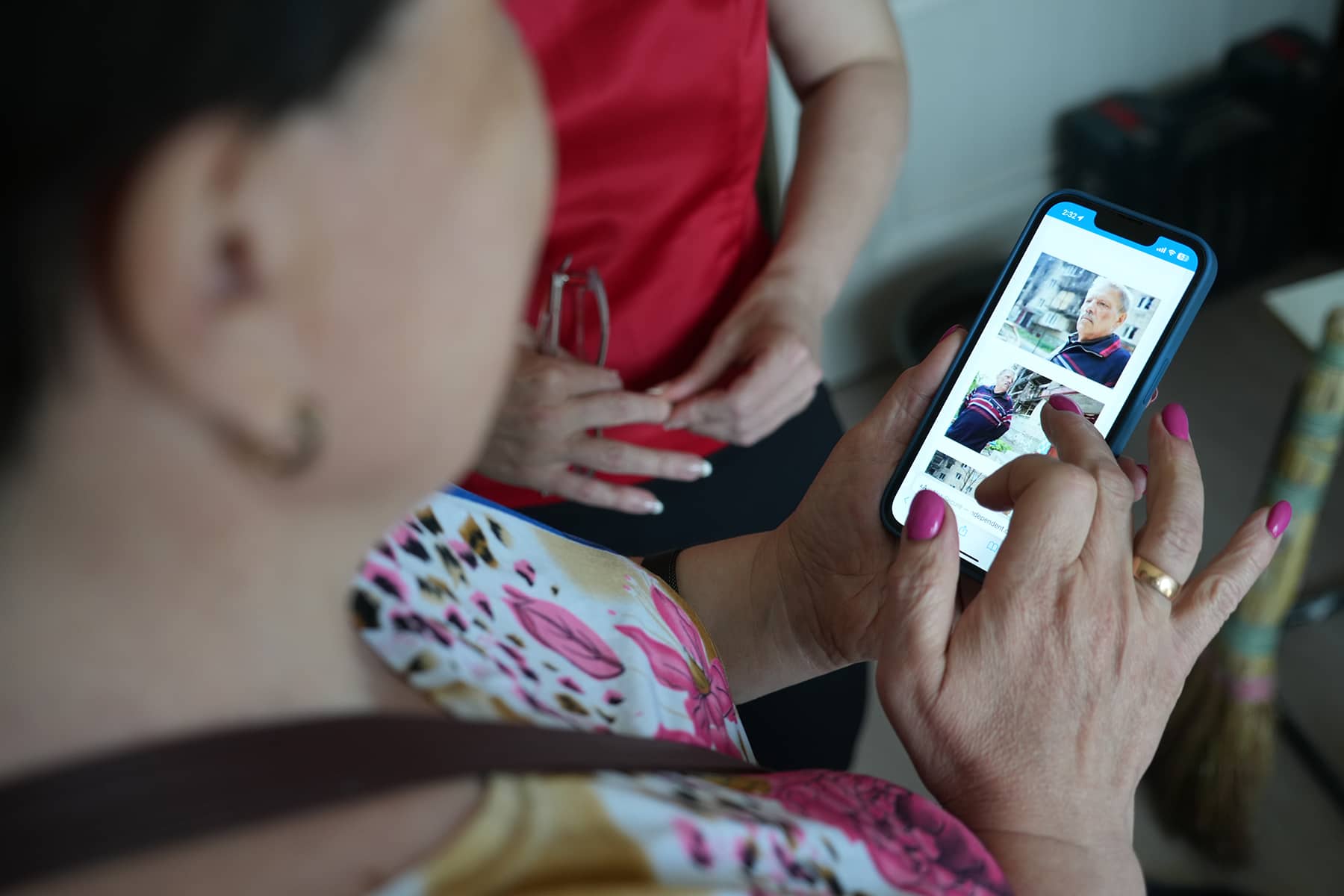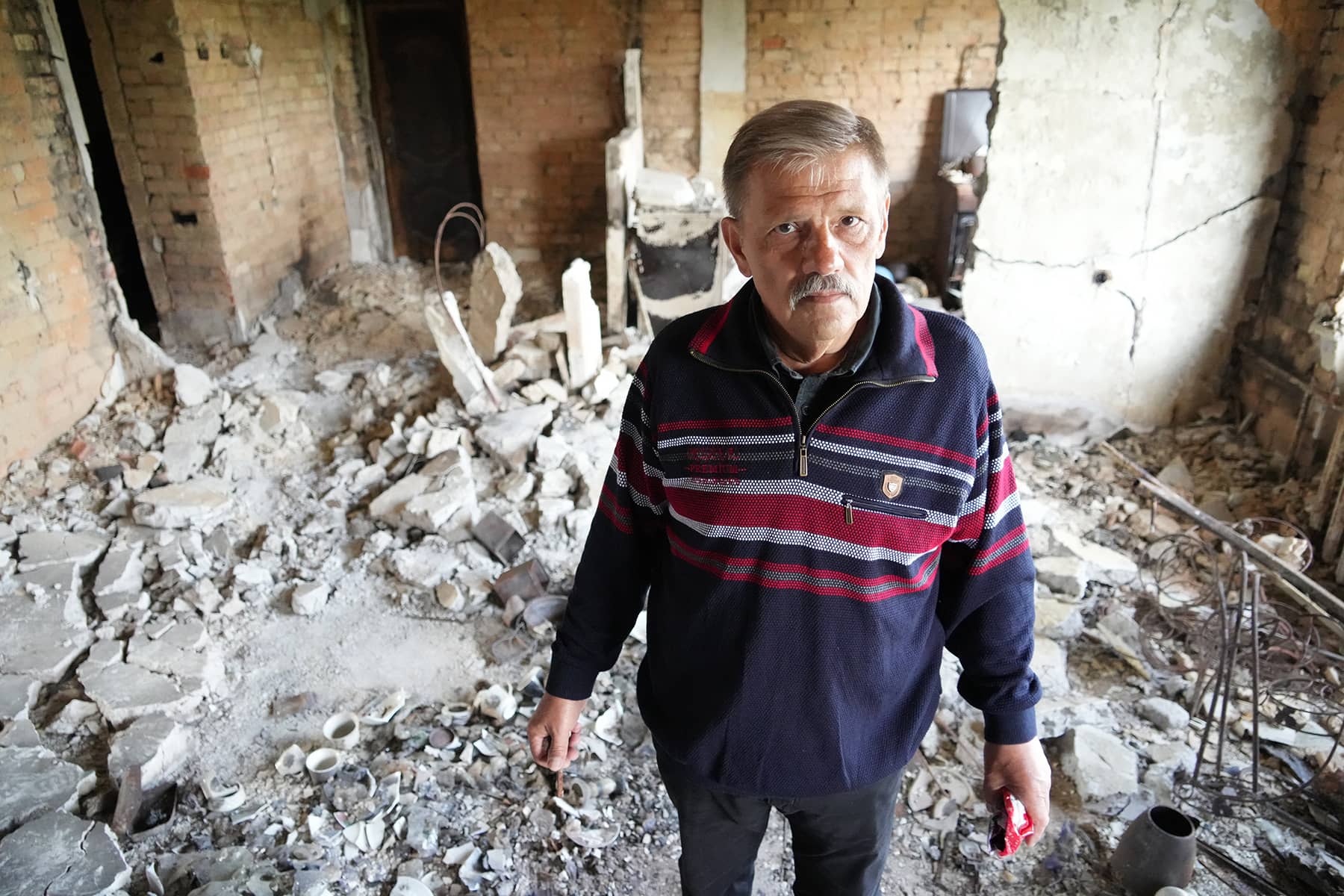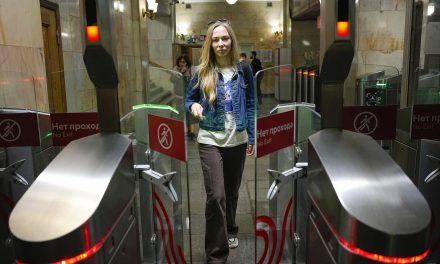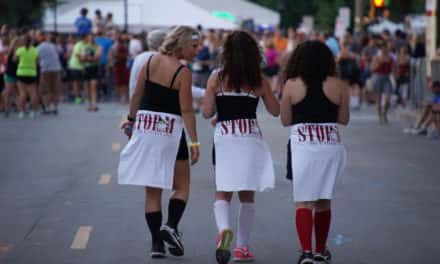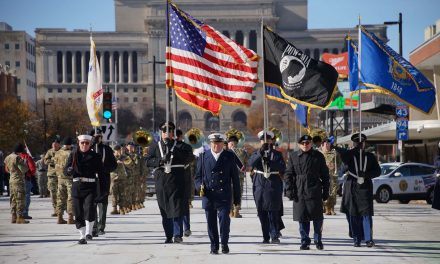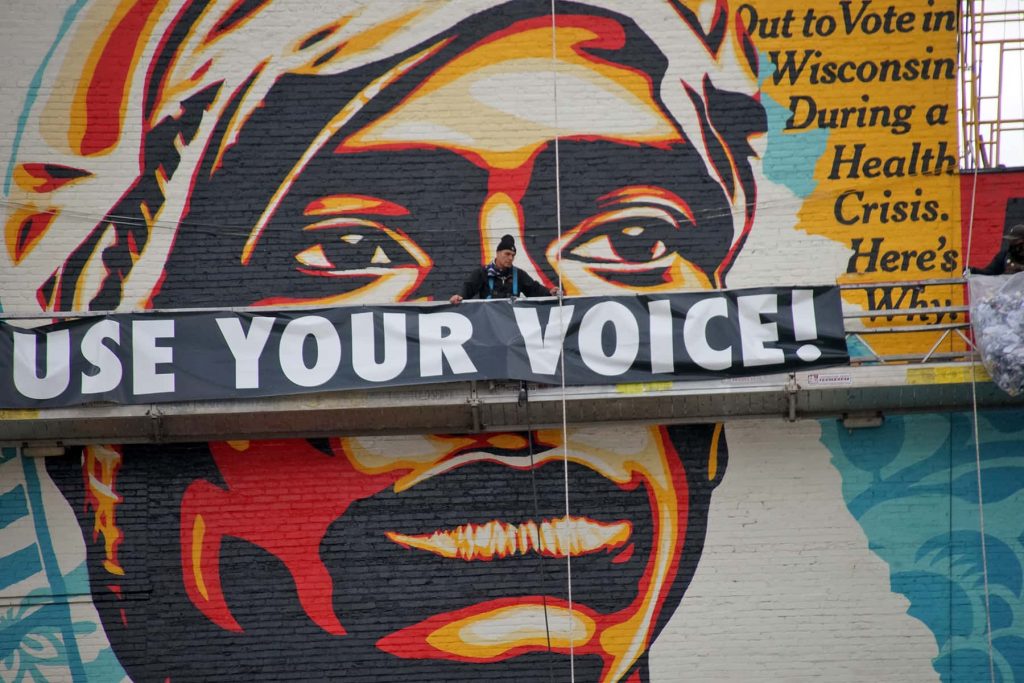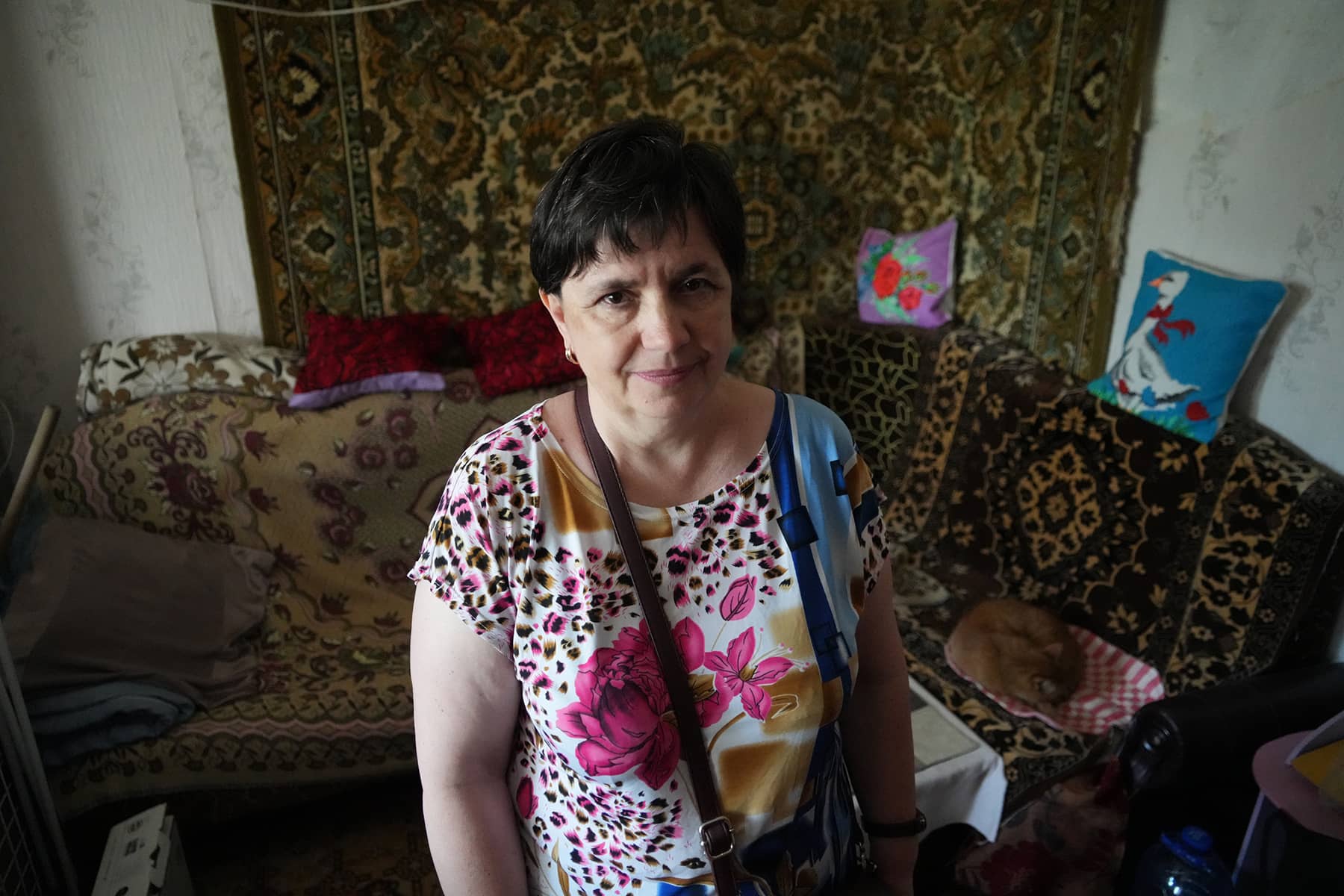
Tuesday, June 27 was almost thirteen months to the day since I had first stood in Milwaukee’s Sister City of Irpin to document the war crimes committed by Russian invaders after the “Hero City” was liberated. May 23, 2022, seemed like it existed in the distant past. But the memories of retracing my steps made it feel like only yesterday.
My return to Irpin stirred both nostalgia and echoes of the trauma I had witnessed at every turn, in a city then still smoldering in the ruins of occupation. The logistics for my previous visit were coordinated by the efforts of Halyna Salapata, founder of Ukrainian Milwaukee and president of Wisconsin Ukrainians Inc.
Many of the photos I took in May of 2022 have remained etched in my memory. Returning to the same locations unfroze those images in my mind. The days were no longer overcast, fortified block posts with guards had been removed, and the more noticeable detritus of war had been cleaned away.
The remains of the iconic Irpin bridge, which had been destroyed to save Kyiv from being captured, was immortalized in the image taken by Associated Press photojournalist Emilio Morenatti. That haunting photo showed a cold group of refugees huddling under its ruins waiting to cross the river.
The makeshift memorials to the dead had been cleared away from the base of the bridge, and even the mural by Mexican-American artist Roberto Marquez had been removed. Just next to the ruined structure was the nearly completed replacement bridge. A sign of Irpin’s efforts to rebuild.
A few yards away was the statue dedicated to the “eternal glory of the heroes” who died as a sacrifice to their families during the Great Patriotic War – the term republics of the Soviet Union used in reference to World War II. I will always remember that spot from The New York Times photo that showed a dead Irpin family. They had just crossed under the destroyed Irpin bridge and were attempting to flee to safety when they were struck by mortar fire. The spot, and the patriotic statue, were now surrounded by a flimsy metal construction wall for some potential renovation.
I was in Irpin to meet with city officials later in the day, traveling with the team from Milwaukee-based Friends of Be an Angel. I was partially guiding them to the sites I had documented last year. The winter months seemed to have eroded some signs of Russia’s war crimes, as damage along streets and buildings from cluster munitions could be seen previously at every step.
Artists had also attempted to reclaim some of the ruins, adorning them with murals to make them into memorials. With that in mind, I directed the group to Iprin’s cultural museum. The institution had been specifically targeted by Russian firepower, in their methodical effort to erase Ukrainian culture. The damaged building had since been covered with murals that emphasized Irpin’s resilience.
I thought the location would make a good place to take photos, and for the group to explore. As we looked for a place to park the cargo van we drove in, I remember that my last team had originally parked across the street. It offered the room we needed for our vehicle, because it was the entrance to one of Irpin’s hospitals. The facility had been destroyed and remained abandoned.
Once we parked and our team got out, the area seemed to have a gravity all its own. I never made it across the street to the cultural museum. Instead, I felt drawn by an unseen force, and the familiarity of retracing my steps.
I was taking photos of Anya Verkhovskaya, director of Friends of Be an Angel, by the car that had been destroyed next to the hospital entrance. Its condition had remained frozen in time, just as I remembered it.
Over the past year, I had become so accustomed to seeing vehicles and buildings riddled with holes or torn apart that the sights seemed like a natural part of the landscape.
For Anya, who had lived in Ukraine years ago but had not visited the country since the full-scale invasion began, it was her first up-close encounter with a relic of Russia’s invasion.
She asked me, rhetorically, how many bullets were required to destroy a car. Much of the damage to the vehicle was actually made by cluster bombs. But to her point, I had seen a great deal of evidence of Russian troops using civilian vehicles for target practice, expending so much ammunition on them to the point of absurdity.
Anya recorded a video to post on social media from that spot, while gravity continued to pull me deeper. I took the path less traveled, unable to clearly see into the distance due to obstructions from tree foliage. When I stepped into the clearing I knew exactly where I was. I had been drawn to the same spot for the same reasons as a year ago.
I stood in the same courtyard, still full of burnt cars – now more rusted from a long winter and extended oxidization. One vehicle had the addition of a mattress. It appeared as if at some point over the past 12 months it was used as a place for someone to sleep.
It was around that spot last May that my team ran into a widower named Vasil. I did not encounter him this time, nor did I enter the remains of his home. But the burnt and scarred exterior of his building remained unchanged from when I previously explored and photographed it.
About that time Anya caught up with me, and mentioned the contrast she saw. Around us were the shattered remains of war, while just nearby was a group of women gathered by a blooming garden and engaged in conversation.
I went with Anya over to talk with the group, and she translated for me. One of the women, named Lena, took us to the side of the building and showed us where machine guns had chipped away at the exterior walls before shooting out her windows.
Lena then invited us inside to view her home. It was an unexpectedly emotional moment for me, as I realized it was the first time in Ukraine that I had entered a private home that had not been utterly destroyed by the Russians.
Lena showed us the damaged room she had pointed to from outside, and the repairs that were still ongoing but nearly finished.
She share photos with us of her son, who was currently deployed somewhere in Bakhmut. It was then that I told her a little about my previous visit after Irpin had been liberated. I showed her photos of the courtyard, and of Vasil.
> READ: Stories from Ukraine: Wandering in the ruins of a shattered life after surviving Russia’s invasion
Lena smiled in recognition. She knew Vasil by name, and said he was still living nearby. When I met him last year, Vasil told me that he could not spend much time in his destroyed home. So he rotated staying between friends in the area.
As I shared my experiences with Lena, and my thoughts about returning after a year, she became very emotional.
“Thank you for not forgetting us,” she told me. “Thank you for remembering Irpin and sharing our story with the world.”
I was deeply moved by Lena’s words, which were unexpected. It reminded me of a quote that I heard while watching a documentary about Martha Gellhorn, considered one of the greatest war correspondents of the 20th century.
“If nobody puts it down on the record anywhere, then the monsters win totally. It must be someplace on the record, because otherwise they could get by with anything. Does it stop anything? I don’t feel that everything I’ve done has been of use. But at least, it is better than silence. Because if you are silent, then they can rewrite it anyway they want. They can make it look great afterward. So there is a point on the record.” – Martha Gellhorn, War Correspondent
We went back outside with Lena and spoke further with the women sitting around the garden. It was a moment of contrasts as I saw happiness and sorrow on faces and in the surrounding environment. All while I was still processing what Lena had said to me upstairs.
Having lived overseas for much of my life, and experienced personal loss in addition to a catastrophic natural disaster, I learned long ago that nothing is permanent. Even the greatest monuments can be washed away in a blink.
Memories have always been my greatest treasure, and it is where people like my beloved grandfathers remain alive. And over the past year, war and natural disasters have been a constant reminder of how precious and brief our lives are.
But Lena’s words reminded me of the power of being a witness.
As a photojournalist, I am driven to capture moments in time. As I look back at images taken a day ago or a decade ago, they all remind me of the Japanese cherry blossom. The sakura is a symbol of beauty and the contrast that life is fleeting.
All my photographs are of moments lost in time, but remain as a witness in the present.
I had no words of comfort to offer Lena. But I feel my memories were a gift to her, just the memory of her – which I am writing about – will remain her gift to me.
It is a small thing, but sometimes the most important thing. To know that we still exist in someone’s memory.
Series: Return to Ukraine
- Return to Ukraine: A trauma loop of travel from Milwaukee to a country still at war a year later
- From Weddings to War: How Kostiantyn and Vlada Liberov photograph Ukraine's daily horrors
- Being Friends of Angels: The Milwaukee nonprofit saving lives and offering hope in Ukraine
- Mayors of Milwaukee and Irpin expand Sister City cooperation after visit by nonprofit delegation
- Interview with Tom Barrett: U.S. Ambassador to Luxembourg reflects on forging ties with Irpin
- Wisconsin Ukrainians host annual fundraising picnic to support homeland on 500th day of war
- Advanced Wireless to donate 840 access points to rebuild Irpin's citywide Wi-Fi network
- Children of Irpin begin planning mural for Mitchell Airport to showcase Sister City friendship
- Irpin is not forgotten: Residents thank Milwaukee Independent for reporting on their "Hero City"
- Milwaukee photojournalist on assignment in Kyiv during July 2 Russian drone strike targeting civilians
- Russian cruise missile attack kills residents far from front lines in Western Ukraine city of Lviv
- Ukraine arrests man accused of directing Russian ballistic missile strike on Kramatorsk pizza parlor
- Milwaukee offers Ukrainian refugee family life-saving treatment for son's genetic condition
- Nikita Pirnach: Irpin student hopes to help his country after finishing education in Milwaukee
- Sick children wait for overseas medical treatments as a new generation is born in Ukraine during war
- Iryna Suslova: The superwoman saving Ukrainian children abducted by Russia
- How a group of Ukrainian mothers, wives, and daughters are distributing vital humanitarian aid
- Freeing Freddie: Educational program aims to reduce PTSD for Ukraine's war-weary children
- The trauma of living: When being killed is the preferred choice to being disfigured from battle
- President Zelenskyy offers gratitude and awards to wounded soldiers while visiting Lviv Hospital
- Former Vice President Mike Pence visits Irpin during unannounced campaign trip to Kyiv
- Military Hospitals provide vital care for Ukrainian soldiers in need of hope and healing
- Combat surgeons pioneer advances in maxillofacial reconstruction of Ukraine's injured heroes
- Milwaukee donors cover cost of reconstructive surgery for American volunteer wounded in battle
- In their own words: Listening to the Voices of Children talk about their experiences from war
- Traumatized by War: Children of Ukraine carry on after losing parents, homes, and innocence
- Widespread Torture: U.N. report documents Russia's systematic executions of Ukrainian civilians
- Wisconsin volunteers sort and pack donated medical supplies for use in Ukraine's hospitals
- Lviv warehouse serves as vital link in medical supply chain from Milwaukee to frontlines
- Aid from Milwaukee is providing internally displaced people in Ukraine with food and clothing
- Iryna Pletnyova: How the city of Uman transformed into a hub for refugees fleeing war
- Bombs in the night: Why children in Uman are still traumatized by Russia's missile attack
- School Bunkers: When a national flag becomes a memorial to dead Ukrainian students
- Hasidic life in Uman: A journey across Ukraine to the Tomb of Rabbi Nachman of Breslov
- Tetiana Storozhko: Being a witness to the history of Roma culture in Ukraine
- Remembering Oskar Schindler: A photojournalist’s diary from the streets of Jewish Kraków
Lее Mаtz
Milwaukee Independent has reported on Russia’s brutal full-scale invasion of Ukraine since it began on February 24, 2022. In May of 2022, Milwaukee Independent was the first news organization from Wisconsin to report from Milwaukee’s Sister City of Irpin after its liberation. That work has since been recognized with several awards for journalistic excellence. Between late June and early July of 2023, Milwaukee Independent staff returned to Ukraine for a second assignment to report on war after almost a year. The editorial team was embedded with a Milwaukee-based nonprofit, Friends of Be an Angel, on a humanitarian aid mission across Ukraine. For several weeks, Milwaukee Independent documented the delivery of medical supplies to military and civilian hospitals, and was a witness to historic events of the war as they unfolded.
Return to Ukraine: Reports about a humanitarian mission from Milwaukee after a year of war

